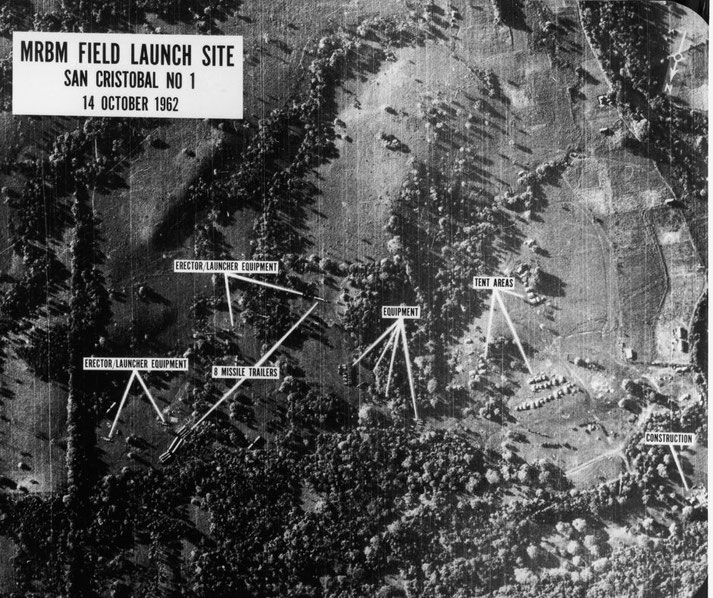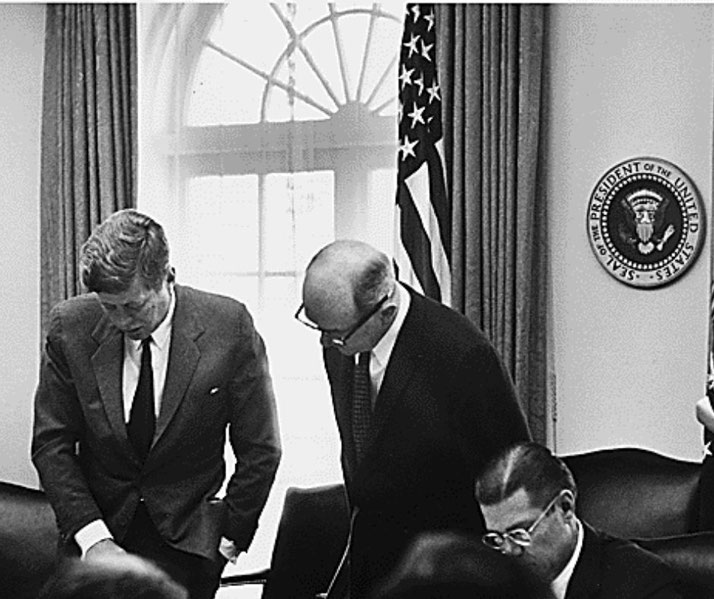The Cuban Missile Crisis: The closest the world came to all-out nuclear war

By 1962, the Cold War was in full swing: the Soviet Union and the United States were locked in a struggle for global supremacy.
Each side tried to outdo the other in terms of military power and political influence. This led to a major standoff between the two superpowers, known as the Cuban Missile Crisis.
For thirteen days in October 1962, the world held its breath as it waited to see if a full-blown nuclear war would break out.
The Cuban Revolution
Before the 1960s, Cuba was ruled by a corrupt dictator named Fulgencio Batista.
Under Batista's rule, American businesses had a great deal of control over the Cuban economy.
However, in 1959, a revolutionary group led by Fidel Castro overthrew Batista's government.
The new Cuban government expelled the American business owners, and the Cuban nation took control of their companies.
This process is known as the 'nationalization' of the businesses.
Obviously, the United States was not happy about this turn of events. As a result, the American government saw Castro's regime as a threat to its interests in the region.
In response, the US began secretly working on plans to try and overthrow the Cuban government.
The failed Bay of Pigs Invasion
In 1961, the American spy department known as the Central Intelligence Agency (the CIA) hatched an idea to overthrow Castro.
The plan was to provide weapons and military training to people who had been exiled from Cuba, and then send them back as an army to invade their homeland.
These exiles were trained in nearby Guatemala and then flown to Cuba in CIA-operated aircraft.
However, to ensure that the Cubans didn't suspect that US was involved, all American markings on the planes and weapons were removed.
The invasion force landed in April 1961 at the Bay of Pigs in Cuba, but it was a complete disaster.
The exiles were quickly defeated by Castro's military, and many were captured or killed.
It became obvious to many countries that America was behind this attempted invasion, and it became a humiliating embarrassment for the United States.
Following the invasion, Castro turned to the Soviet Union for support against American aggression.
He knew that the Soviets had nuclear weapons, and he hoped that they would deter the United States from trying to overthrow his regime again.
How the USSR secretly sent missiles to Cuba
In 1962, Soviet Premier Nikita Khrushchev decided to take advantage of Castro's vulnerability.
He secretly ordered Soviet ballistic missiles to be placed in Cuba, which meant that they were just 90 miles away from the US coast.
As a result, these missiles were capable of reaching most of the United States, including major cities like Washington DC, New York City, and Miami.
What Castro didn't know is that Khrushchev was doing this as a response to the US stationing its own Jupiter ballistic missiles in Turkey, which were aimed at the Soviet Union.
These American missiles had been placed in Turkey in 1961, and the Soviets saw them as a direct threat.

What happened during the Cuban Missile Crisis?
Up until this point, America was completely unaware of how close nuclear missiles were to them.
It was only with their sudden discovery that the Cuban Missile Crisis began.
On October 14, 1962, a US U-2 spy plane was flying over Cuba and happened to capture photographic evidence of the Soviet missile sites under construction.
The photos were quickly shown to President John F. Kennedy on October 16, who realized the imminent danger his country was in.
So, Kennedy was faced with a difficult decision: should he order a strike against the missile sites, or should he try to negotiate with the Soviets?
To help him decide the best course of action, the president assembled a group of advisors called the Executive Committee of the National Security Council (ExComm).
During their discussions, the group weighed various options, ranging from doing nothing, launching a military attack on Cuba, or imposing a naval blockade on Cuba.
JFK's brother, Robert F. Kennedy, who was also the US Attorney General at the time, specifically advocated for a blockade instead of an airstrike.
After much deliberation, Kennedy decided on the last option. On the 22nd of October, he appeared on American TV and announced that the United States would impose a naval blockade of Cuba until the Soviet Union agreed to remove the missiles.
The quarantine comes into effect
The blockade of Cuba was called a "quarantine" rather than by the term blockade, which was considered to be too aggressive.
JFK hoped that by changing the wording, it would not provoke the Soviets into taking military action.
The American quarantine took effect on October 24, and the world anxiously watched as a series of Soviet ships began approaching the blockade line.
The US Navy was also made aware that several Soviet submarines equipped with nuclear torpedoes were also in the waters near Cuba.
One submarine, the B-59, was forced to surface after being subjected to depth charges by US Navy ships.
This was a dangerous moment, as the submarine commander had nearly launched its nuclear torpedoes in response to what he considered to be an attack by the Americans.
Thankfully, he chose not to, which stopped it escalating into a full nuclear conflict.
At the last moment, the Soviet ships decided to stop sailing to Cuba and turned back instead.
While all of these things were playing out, Kennedy and Khrushchev exchanged a series of letters discussing potential resolutions to the crisis.
Once more, JFK's brother, Robert, aided in this process by directly communicating with the Soviet Ambassador to the US, Anatoly Dobrynin, in an attempt to help de-escalate the situation.
Then, on October 27, the crisis reached a critical point when one of the American U-2 spy planes was suddenly shot down while flying over Cuba.
The aircraft was piloted by Major Rudolf Anderson, who died as a result, and he would be the only direct casualty of the crisis.
Tensions rose further when another U-2 plane strayed into Soviet airspace over Siberia in Russia.
As both nations believed that an all-out war was a real possibility, the US Strategic Air Command was placed on DEFCON 2 for the first time in its history.
This indicated that the armed forces were ready to deploy and engage in full-scale war within six hours.

How the Cuban Missile Crisis came to an end
Despite the increasing tension from each of these dramatic incidents, both leaders continued to negotiate.
Thankfully, they were finally able to reach an agreement. In this deal, the United States agreed to secretly remove its nuclear missiles from Turkey and also promised not to invade Cuba.
In return, the Soviet Union agreed to remove its missiles from Cuba and to not place any more nuclear weapons on the island.
With both sides declaring that this agreement was acceptable, the crisis formally ended on October 28.
As promised, Khrushchev ordered the missiles to be dismantled and removed from Cuba.
The world breathed a sigh of relief as the threat of nuclear war subsided.
Why was the Cuban Missile Crisis so important?
The Cuban Missile Crisis was a critical moment in the Cold War. It showed that both sides were capable of destroying the other, and that diplomacy was necessary to avoid such a catastrophe.
The experience ultimately led to increased cooperation between the United States and the Soviet Union in order to prevent future conflicts.
In particular, it led to the establishment of the Moscow-Washington hotline, a direct communication link between the two superpowers.
The plan was that if any future misunderstandings occurred, the leaders of both nations could talk directly via this phoneline and reach a resolution much quicker.
Finally, the crisis also contributed to the signing of the 1963 Partial Nuclear Test Ban Treaty, which sought to limit the proliferation of nuclear weapons.
Further reading
What do you need help with?
Download ready-to-use digital learning resources
Copyright © History Skills 2014-2025.
Contact via email
With the exception of links to external sites, some historical sources and extracts from specific publications, all content on this website is copyrighted by History Skills. This content may not be copied, republished or redistributed without written permission from the website creator. Please use the Contact page to obtain relevant permission.





